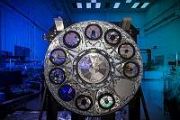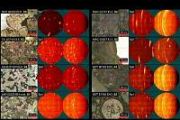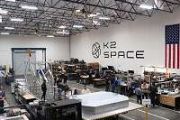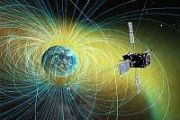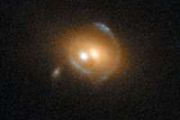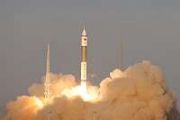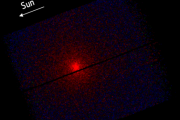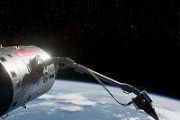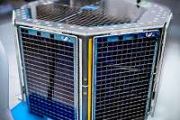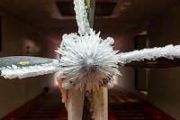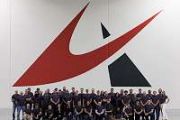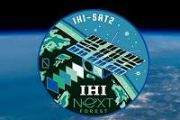
Copernical Team
China space station crew completes spacewalk
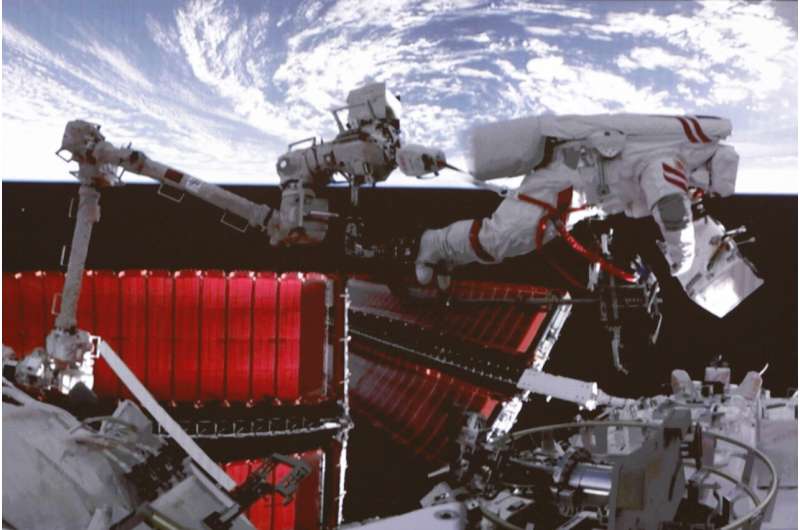
The crew of China's orbiting space station has completed the first of several planned spacewalks of their six-month mission, pushing such activities into the realm of routine for the country's astronauts.
SpaceX ignites giant Starship rocket in crucial pad test
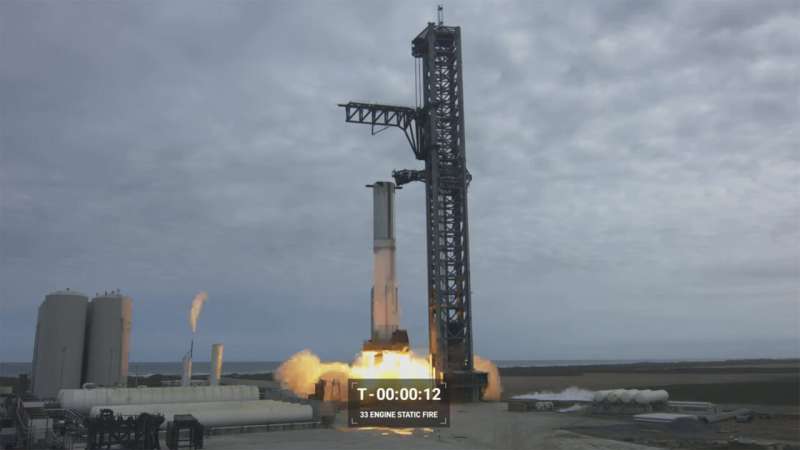
SpaceX is a big step closer to sending its giant Starship spacecraft into orbit, completing an engine-firing test at the launch pad on Thursday.
Thirty-one of the 33 first-stage booster engines ignited simultaneously for about 10 seconds in south Texas. The team turned off one engine before sending the firing command and another engine shut down—"but still enough engines to reach orbit!" tweeted SpaceX's Elon Musk.
Musk estimates Starship's first orbital test flight could occur as soon as March, if the test analyses and remaining preparations go well.
SES, ThinKom and Hughes enable multi-orbit resilient connectivity for critical airborne missions
 SES, ThinKom and Hughes demonstrated revolutionary high-performance multi-orbit service capable of supporting multiple solutions for government airborne missions, the companies announced Wednesday. The open architecture ThinKom ThinAir Ka2517 airborne satcom terminal was successfully demonstrated over SES's Medium Earth Orbit (MEO) and Geostationary (GEO) satellite networks during testing at Thi
SES, ThinKom and Hughes demonstrated revolutionary high-performance multi-orbit service capable of supporting multiple solutions for government airborne missions, the companies announced Wednesday. The open architecture ThinKom ThinAir Ka2517 airborne satcom terminal was successfully demonstrated over SES's Medium Earth Orbit (MEO) and Geostationary (GEO) satellite networks during testing at Thi ISRO launches second Small Satellite Launch Vehicle-SSLV-D2
 The Small Satellite Launch Vehicle (SSLV) successfully lifted off from the Satish Dhawan Space Centre on the island of Sriharikota, India on Thursday at 9:18 a.m. local time (03:48 UTC), six months after its SSLV-D1 maiden flight in August 2022, which failed to reach a stable orbit.
An analysis "revealed that there was a vibration disturbance for a short duration on the Equipment Bay (EB)
The Small Satellite Launch Vehicle (SSLV) successfully lifted off from the Satish Dhawan Space Centre on the island of Sriharikota, India on Thursday at 9:18 a.m. local time (03:48 UTC), six months after its SSLV-D1 maiden flight in August 2022, which failed to reach a stable orbit.
An analysis "revealed that there was a vibration disturbance for a short duration on the Equipment Bay (EB) Shenzhou XV astronauts take their first spacewalk
 Shenzhou XV mission crew members have just concluded their first spacewalk, according to the China Manned Space Agency. The agency said in a news release early on Friday morning that mission commander Major General Fei Junlong and Senior Colonel Zhang Lu completed a seven-hour spacewalk and returned to the Wentian science module at 12:16 am (Beijing Time). The third crew member, Senior Colonel D
Shenzhou XV mission crew members have just concluded their first spacewalk, according to the China Manned Space Agency. The agency said in a news release early on Friday morning that mission commander Major General Fei Junlong and Senior Colonel Zhang Lu completed a seven-hour spacewalk and returned to the Wentian science module at 12:16 am (Beijing Time). The third crew member, Senior Colonel D MDA secures new contract to supply Ka-band multibeam antennas for Argentina's ARSAT-SG1 Satellite
 MDA Ltd. (TSX: MDA), a leading provider of advanced technology and services to the rapidly expanding global space industry, has announced a new contract award to design, build and supply all of the Ka-band multibeam antennas for the ARSAT-SG1 satellite. ARSAT is Argentina's national telecommunications company and ARSAT-SG1 will provide high-speed internet as well as digital video and voice servi
MDA Ltd. (TSX: MDA), a leading provider of advanced technology and services to the rapidly expanding global space industry, has announced a new contract award to design, build and supply all of the Ka-band multibeam antennas for the ARSAT-SG1 satellite. ARSAT is Argentina's national telecommunications company and ARSAT-SG1 will provide high-speed internet as well as digital video and voice servi AST SpaceMobile announces collaboration with Zain KSA
 AST SpaceMobile, Inc. (NASDAQ: ASTS), has announced a non-binding memorandum of understanding with Zain KSA, a leading telecommunications operator in Saudi Arabia. The signing took place at the international LEAP 2023 Tech Conference in Riyadh.
The MoU would enable AST SpaceMobile and Zain KSA to collaborate towards new telecom solutions and satellite-based digital services in Saudi Arabia
AST SpaceMobile, Inc. (NASDAQ: ASTS), has announced a non-binding memorandum of understanding with Zain KSA, a leading telecommunications operator in Saudi Arabia. The signing took place at the international LEAP 2023 Tech Conference in Riyadh.
The MoU would enable AST SpaceMobile and Zain KSA to collaborate towards new telecom solutions and satellite-based digital services in Saudi Arabia NASA turns to AI to design mission hardware
 Spacecraft and mission hardware designed by an artificial intelligence may resemble bones left by some alien species, but they weigh less, tolerate higher structural loads, and require a fraction of the time parts designed by humans take to develop.
"They look somewhat alien and weird," Research Engineer Ryan McClelland said, "but once you see them in function, it really makes sense."
Spacecraft and mission hardware designed by an artificial intelligence may resemble bones left by some alien species, but they weigh less, tolerate higher structural loads, and require a fraction of the time parts designed by humans take to develop.
"They look somewhat alien and weird," Research Engineer Ryan McClelland said, "but once you see them in function, it really makes sense." HETDEX reveals galaxy gold mine in first large survey
 Astronomers have barely scratched the surface of mapping the nearly endless stars and galaxies of the heavens. Using supercomputers, researchers with The University of Texas at Austin have has now revealed the locations of more than 200,000 new astronomical objects. Their goal is to map even more and use that knowledge to predict the ultimate fate of the universe.
The Hobby-Eberly Telescop
Astronomers have barely scratched the surface of mapping the nearly endless stars and galaxies of the heavens. Using supercomputers, researchers with The University of Texas at Austin have has now revealed the locations of more than 200,000 new astronomical objects. Their goal is to map even more and use that knowledge to predict the ultimate fate of the universe.
The Hobby-Eberly Telescop NASA's NuSTAR reveals hidden light shows on the Sun
 Even on a sunny day, human eyes can't see all the light our nearest star gives off. A new image displays some of this hidden light, including the high-energy X-rays emitted by the hottest material in the Sun's atmosphere, as observed by NASA's Nuclear Spectroscopic Telescope Array (NuSTAR). While the observatory typically studies objects outside our solar system - like massive black holes and co
Even on a sunny day, human eyes can't see all the light our nearest star gives off. A new image displays some of this hidden light, including the high-energy X-rays emitted by the hottest material in the Sun's atmosphere, as observed by NASA's Nuclear Spectroscopic Telescope Array (NuSTAR). While the observatory typically studies objects outside our solar system - like massive black holes and co 






